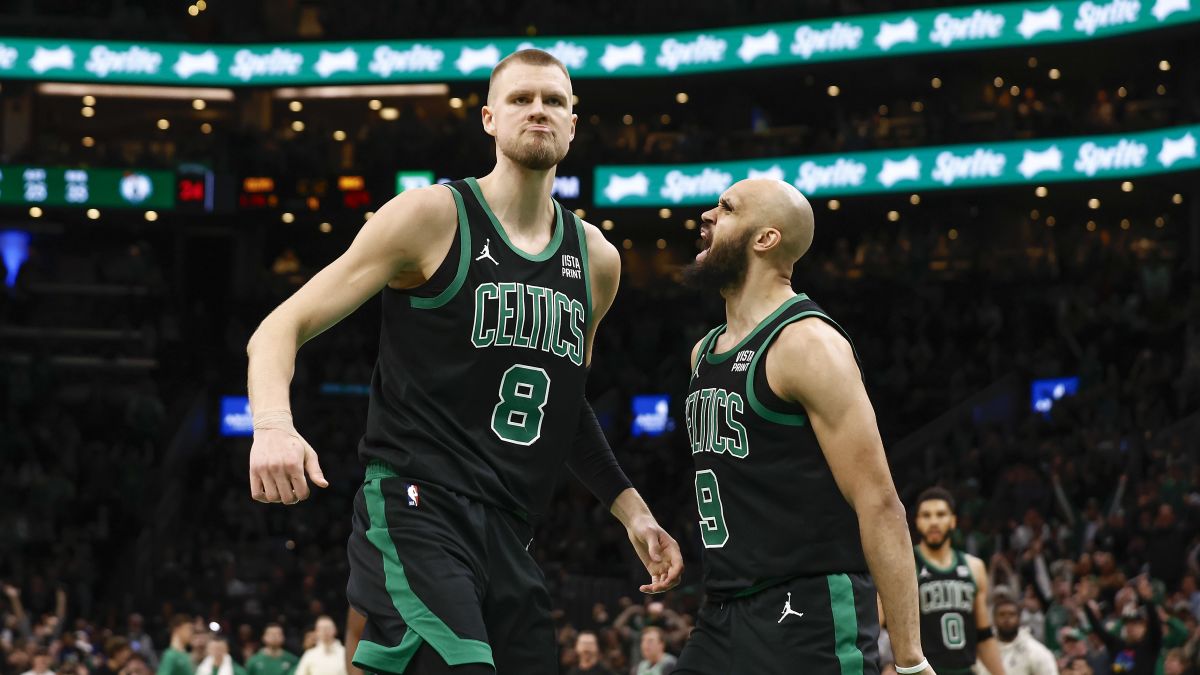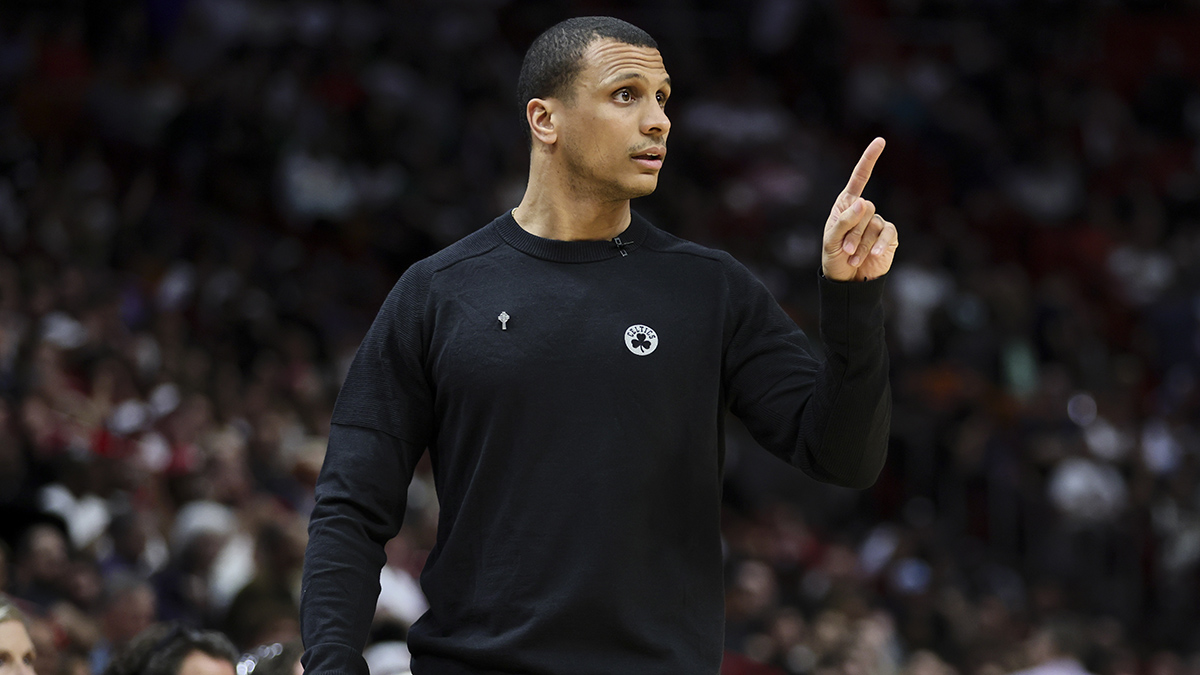Go back and read some of the coverage of Team USA before the 2010 FIBA World Championship and you’ll marvel at the similarities to what’s being said about the current squad that’s set to begin play in China this weekend.
Nine years ago, on the heels of the Redeem Team's gold medal showing at the 2008 Olympics in Beijing, all 12 members of Team USA punted on playing in the 2010 FIBA tournament. The young roster that Team USA eventually cobbled together was dubbed the "B-Team” because of the lack of established star power, and half of the 12-man roster was aged 22 or younger.
There was no LeBron, no Kobe, no D-Wade. And while a 21-year-old Kevin Durant had already firmly established himself after winning the NBA scoring title during the 2009-10 season, he was the only All-NBA player on Team USA’s 2010 roster.
Masked by all the hoopla surrounding who wasn’t playing, that 2010 squad quietly boasted an entire fleet of soon-to-be NBA superstars. Four of those under-22 players would claim the MVP award over the next seven NBA seasons. In fact, Durant (2014), Derrick Rose (2011), Stephen Curry (2015, 2016), and Russell Westbrook (2017) accounted for every non-LeBron MVP in that span.
Which brings us back to this year’s entry. For all the understandable consternation about Team USA’s starless 2019 squad and the daunting challenge that awaits this ragtag group in China, there’s a strong chance that some of the youngest talent on this year’s roster eventually could emerge as the future faces of the league.
Which is why Celtics fans have a particularly vested interest in this year’s tournament. Even if this is more like the “C Team” — given the presence of four Celtics players, including incoming All-Star Kemba Walker and Marcus Smart — the focal point here is obvious for Boston fans: 22-year-old Jaylen Brown and 21-year-old Jayson Tatum.
Can Boston’s young guys use Team USA as a springboard to stardom like the youngest members of that 2010 squad?
Near the end of Boston’s playoff run last season, Celtics coach Brad Stevens marveled out loud at how Tatum and Brown had carried themselves in the face of lofty expectations and constant scrutiny.
Boston Celtics
"I was 30 before I was in a position where anybody really cared about anything I did,” said Stevens.
After Tatum and Brown starred in the Celtics’ improbable Kyrie Irving-less playoff run of 2018, expectations for both players rocketed to impossible heights. When the Celtics floundered throughout a disastrous 2018-19 season, much of the criticism fell on the “young guys,” as Irving so often referred to them (and not always with the most positive connotation).
Some of that criticism was fair. But Tatum and Brown were far from the only ones to believe their own hype. Brown was able to shrug off a rough start and emerge as one of Boston’s most consistent players late in the season. Tatum put up some of the best advanced numbers on the team, but his dip in efficiency suggested a player that stalled in his sophomore season.
The prevailing narrative after Boston’s second-round playoff exit: Maybe Boston’s “young guys” didn’t have quite as high of ceiling as it seemed.
All of which the Celtics' brass scoffed at a bit. Despite the departures of Irving and Al Horford this summer, part of what kept Boston decision-makers invigorated about the future was the opportunity to see what Tatum and Brown can do as focal points of this team. Yes, the addition of Walker and a healthier Gordon Hayward still leaves Boston with roles to identify and shots to properly distribute. But there’s genuine intrigue in the organization to see if the “young guys” can rise again with running mates who are genuinely eager to empower them.
What the entire NBA world sometimes lost track of with Brown and Tatum is just how young they still are. While the duo did not reach their lofty outside expectations last season, perspective can be found when comparing Brown and Tatum’s production compared to other current star players at similar age/experience levels.
For instance, take a look at Jaylen Brown’s numbers to those of Kawhi Leonard during both players’ age 22 season, per Basketball Reference:
Brown is undeniably less efficient and doesn’t impact the entire box score the way Leonard did at the same age, particularly when you remember the Spurs were a championship team in Leonard’s third season. Still, comparing both players and their per-36 production in their age 22 season is an interesting exercise. Remember, too, Leonard was Finals MVP that season.
This isn’t to suggest that Brown is the next Leonard. Brown needs to make tremendous strides to even get in Leonard's ballpark in terms of consistently impacting the game at both ends of the floor. It’s simply a reminder that players are not finished products in age-22 seasons and development is not always linear.
Bringing the conversation back to Team USA, it’s difficult to compare Brown and Tatum to the sub-22 crowd from the 2010 roster, though comparing per-36 numbers for the age-20 seasons of Tatum and Durant is yet another interesting exercise (via Basketball Reference):
The reminder here is simply this: Tatum and Brown are still insanely young and the potential is undeniable. The 2018 playoff run left all of us hitting the accelerator on what they could become and how fast they might get there. Team USA offers a chance for them to remind the rest of the NBA why there was so much hype before last season.
Just to grease the tracks for the "young guy” hype train that could depart the station during the FIBA tournament, consider what Team USA coach Gregg Popovich said of Brown after he scored a team-high 19 points in Team USA’s final exhibition tuneup against Canada earlier this week.
"Jaylen, he’s just a hard-nose player,” said Popovich. "He understands what has to be done. He doesn’t care about anything, except playing with his teammates, winning, playing aggressively all the time, and he’s consistent in that regard. He does it all the time. He’s confident in his shot. He’s tough underneath. So, he’s been one of our more consistent players, along with Myles [Turner].”
It seems a fair bet that at least one of Team USA’s sub-23 contingent is going to make their first All-Star team next season. That group is comprised of Tatum, Brown, Turner, and Donovan Mitchell. In 2027, we probably won’t reflect on this foursome quite the same way we do now with Durant/Rose/Westbrook/Curry, but the young talent on these Team USA rosters has consistently been a pretty good bet to pan out. Consider that sub-23 talent on the 2014 FIBA roster included 22-year-old Kyrie Irving and 21-year-old Anthony Davis.
Even if Tatum and Brown don’t kick down the door during the FIBA tournament, there is value to be gained by simply being part of the experience. The duo has gotten to bond with Smart and Walker and started the chemistry-building process for next year’s Celtics. Maybe more important are the bonds being made with the eight other players on the roster.
One need only rewind to that 2010 team again. That’s where Durant, Curry, and Andre Iguodala first bonded, as the relationships built in Turkey that year aided the Golden State Warriors in luring Durant to the Bay when he reached free agency.
September is usually a slow slog to training camp and Celtics fans haven’t had much reason to perk up about international play (2010 might be best remembered in these parts for Rajon Rondo’s withdrawal before the start of the tournament). That changes this year, and not only because of Team Shamrock: Celtics big men Daniel Theis (Germany) and Vincent Poirier (France) are competing in the tournament as well.
Still, it’s Tatum and Brown in the spotlight. The absence of established stars in China gives them a perfect opportunity to show they are truly next in line.
Click here to download the new MyTeams App by NBC Sports! Receive comprehensive coverage of your teams and stream the Celtics easily on your device.




